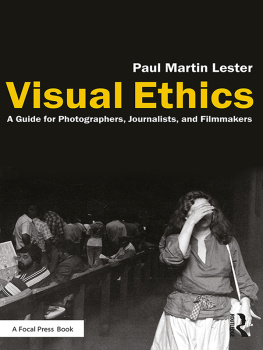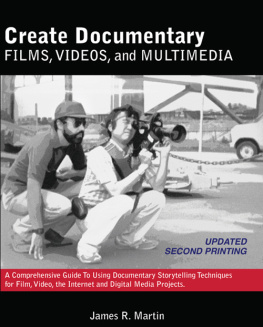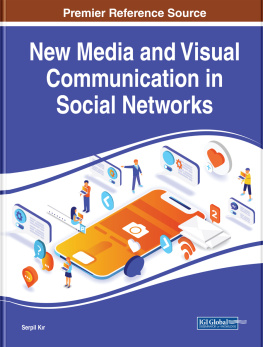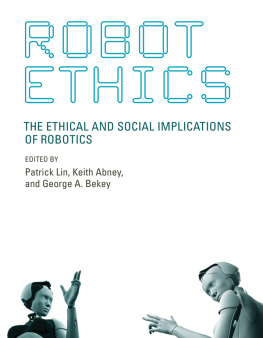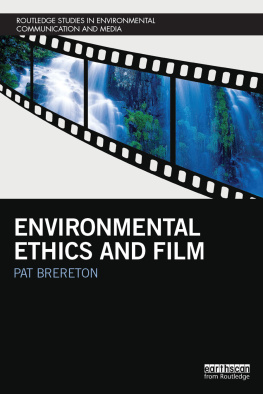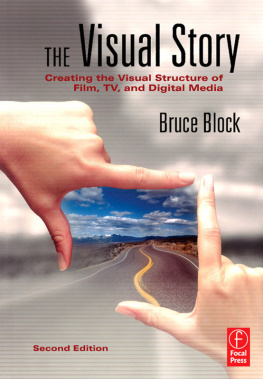Visual ethics is, of course, the reason why this book was written, but its hidden agenda is more complex. Although the ethical issues related to collecting, processing, and presenting visual messages in all manner of media and a seemingly unlimited number of purposes is important and, quite frankly, overdue, the actual purpose of this work is to teach critical thinking. Through practice using the 10-step Systematic Ethical Analysis (SEA) for how to best analyze ethical slights of the past and present, you should learn how to respond in positive ways to dilemmas presented to you in the future both professional and personal. Your goal with the SEA is to move from a gut-feeling, highly individualized, short-term, ...
It was the type of assignment that makes cynical reporters and photojournalists outwardly groan: Go to the airport and meet 80-year-old twin brothers one local and the other flying in from Ireland. They hadnt seen each other in more than 40 years.
There were many reasons for not wanting to go on the job. Most reasons come down to the greatest detriment a journalist can exhibit previsualization. To cement the buzzkill while driving to the airport, Jack, the reporter and I discussed what we would experience at the reunion a long wait at the gate (note: This anecdote happened before the airport restrictions mandated by 9/11 in 2001), an excited family, the ancient brothers seeing each other and giving a quick hug, and inarticulate or clichd explanations of how it all felt to them. As a photojournalist with my role-related responsibility to make sure I visually recorded the reunion, I was sure that I wouldnt be able to sum up the situation in a single frame because the lighting at the airport would be poor and there would be too many friends and family members crowded around the two men to get a clear and clean composition. Terrible quotes and awful photographs a challenge for both of us. Jack and I couldnt wait to get what we needed and get out so we could go to our favorite restaurant for dinner.
Sure enough, the reunion ended up just as we had imagined. But the unexpected occurrence at the airport haunts me to this day. Consequently, I always start a mass media ethics class I teach with the story and what I consider to be one of the most unethical actions I ever took.
At the airport, I stood in front of a roped area next to the local brother and his family. I wore my usual array of cameras for this situation one around my neck with a 35mm lens and an electronic flash attached and another with an 85mm lens hanging off my right shoulder. My left shoulder carried my camera bag. I looked like a badass photojournalist ready for anything. But I wasnt ready for what happened next.
After about 30 minutes, the plane taxied to the gate. Well-dressed first class passengers walked past my vantage point. I knew it would be several minutes before the brother would wobble out of the gangway so I was relaxed. But then I caught sight of someone famous.
Inexplicitly walking toward me was the actress Faye Dunaway (Faye Dunaway, 2017).
Before her airplane trip, she was in three critically acclaimed and internationally influential motion pictures. She starred in Bonnie and Clyde and Chinatown and was honored with Academy Award Best Actress nominations for both roles. For Network she won an Oscar for her performance. She was a big, worldwide star (lets not think about her colossal gaffe during the 2017 Academy Award ceremony).
She was about 20 feet from me when our eyes briefly met and I could tell she noticed my cameras. I was a bit stunned at seeing such a famous person unexpectedly but I was snapped out of my awe by an agonizing scream she directed at me. She turned toward a wall, hid her face, and sobbed uncontrollably. It was awful. I wanted to go to her and let her know I wasnt there to photograph her, but I froze. Incredibly, the departing passengers didnt seem to notice this distraught woman on the side as they moved quickly past her. Several moments passed. Most of the passengers were off the plane. Dunaway remained against the wall with her hands on her cheeks. No one went to her to ask if she needed help including myself. She then suddenly became erect, wiped her face, and started to walk toward me. Without thinking I picked up the camera with the flash around my neck. As she walked past she covered her face with a hand.
I took a picture (Lester, 2017).
This book details historic and current ethical dilemmas in various media and for numerous purposes and includes as its base a ten-point systematic ethical analysis (SEA) that should help guide whether actions should be considered ethical. The SEA is largely a product of what has been called the ethics mantra which states: Do your job and dont cause unjustified harm. The mantra should then be combined with an understanding of six moral philosophies the categorical imperative, utilitarianism, the golden mean, the golden rule, the veil of ignorance, and hedonism. With both the mantra and the philosophies, I failed.
It wasnt my job to document Faye Dunaways visit. In fact, it should have been no concern to anyone. Plus, by taking a harshly intrusive flash picture I caused emotional harm to the actress. Furthermore, the use of the six philosophies substantiates the conclusion that my behavior was reprehensible.
The categorical imperative stresses a rule that should not be violated. Professionally, anything newsworthy is part of my role-related responsibility as a photojournalist. A categorical imperative demands that it should be photographed. However, there was nothing newsworthy about Dunaways arrival at the airport.

